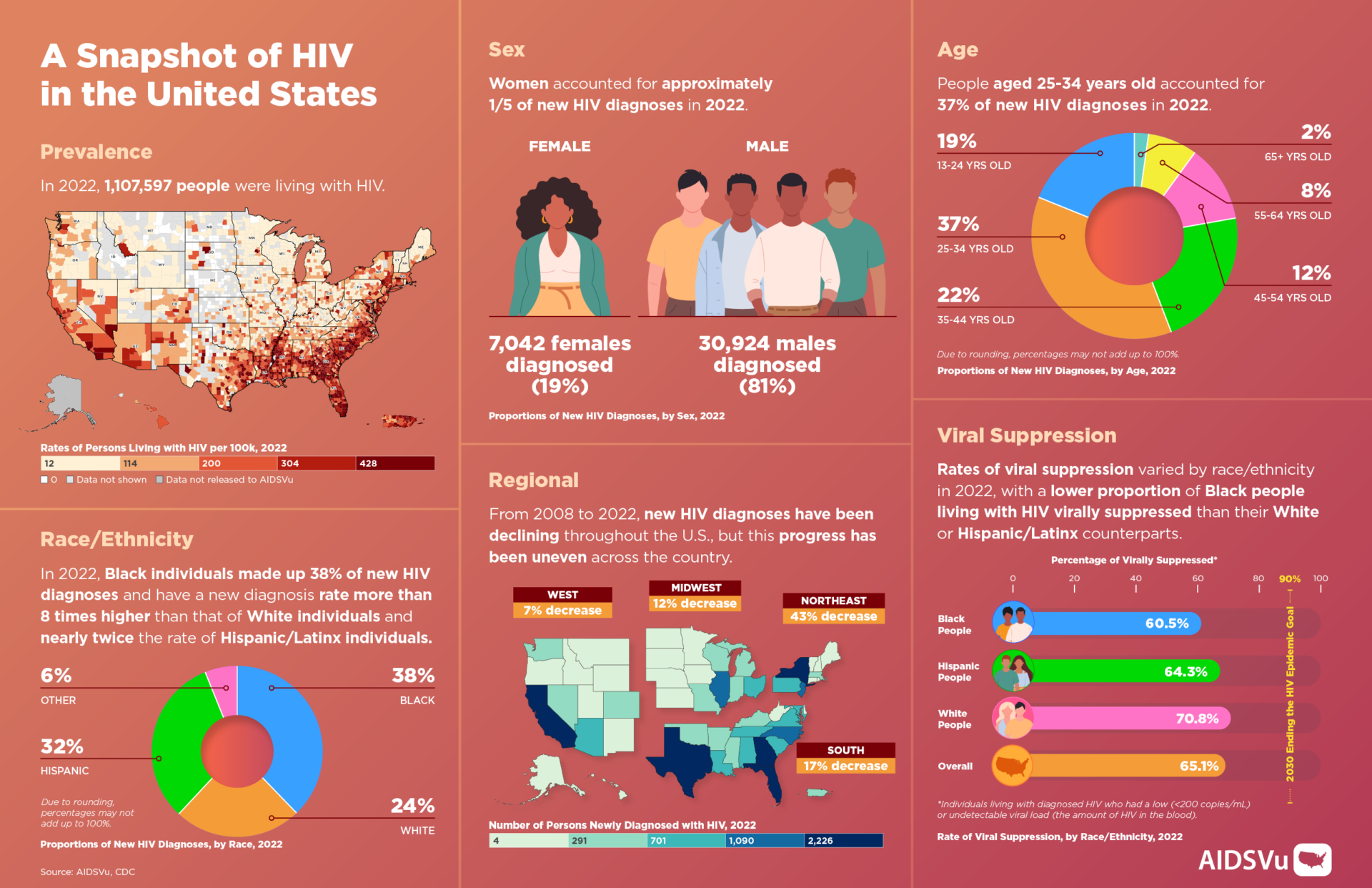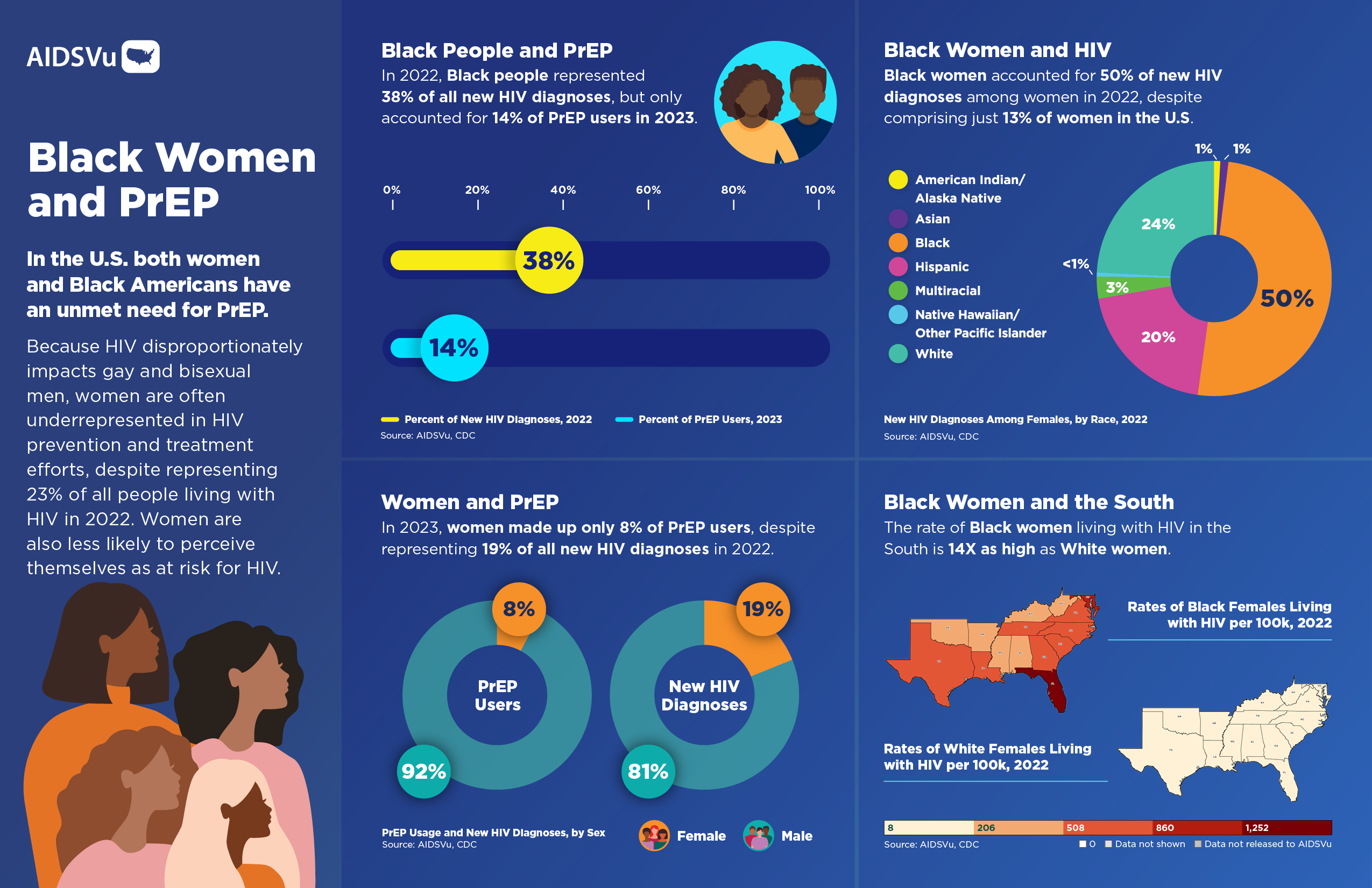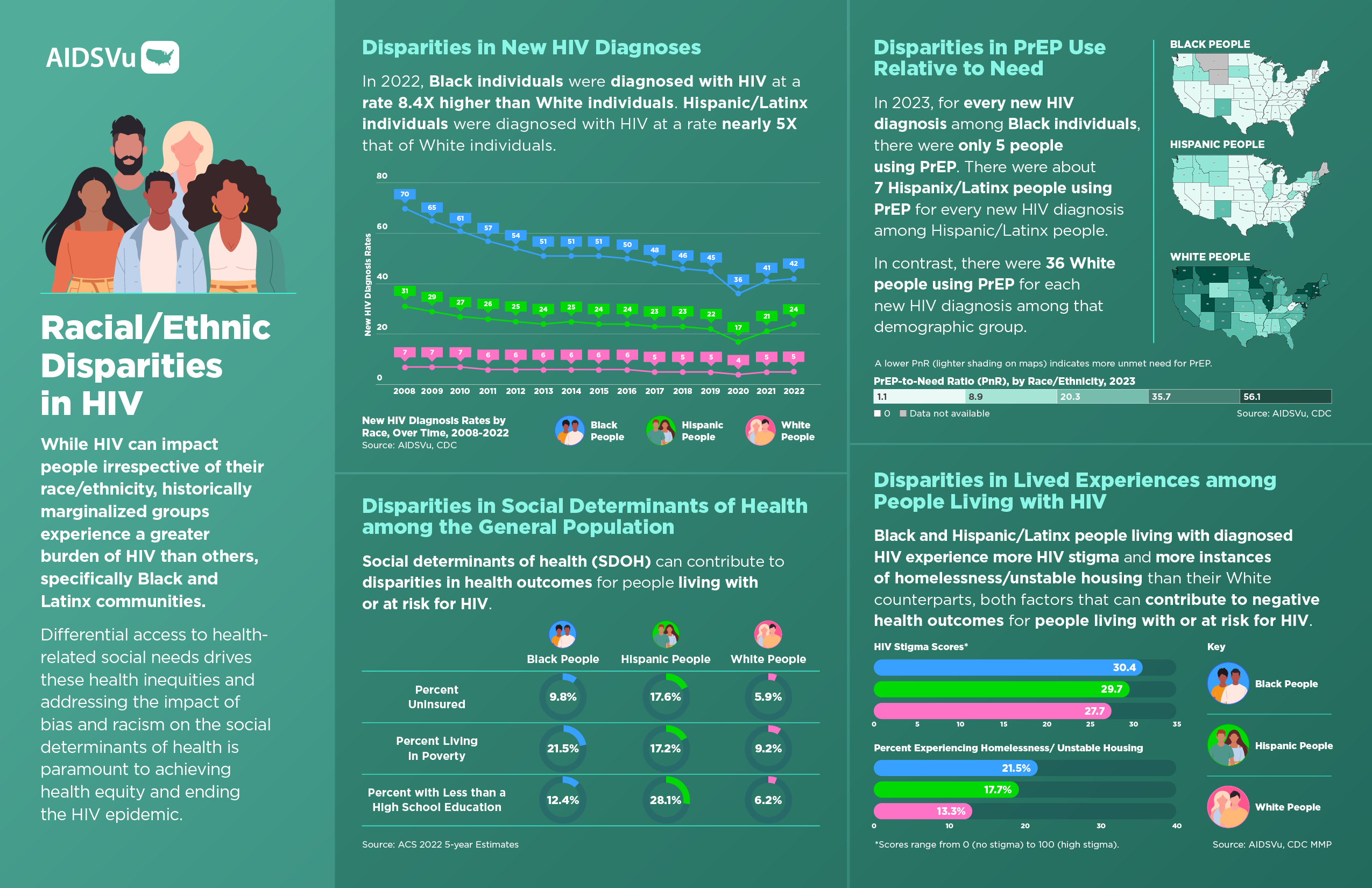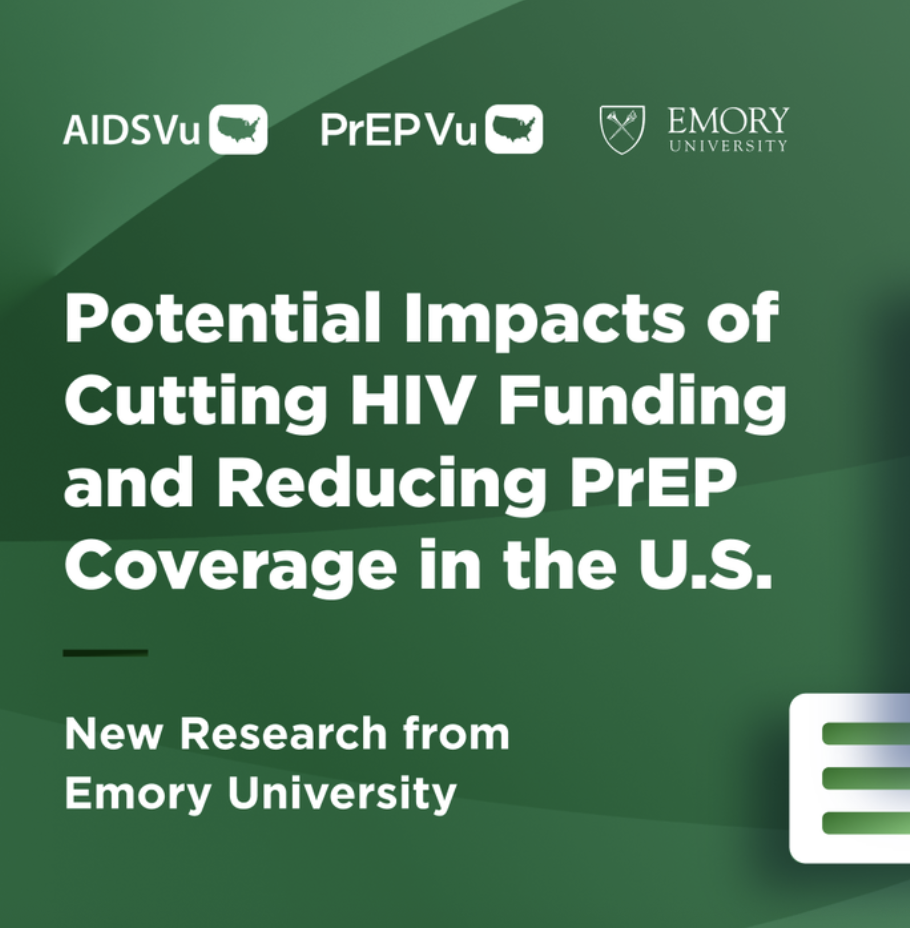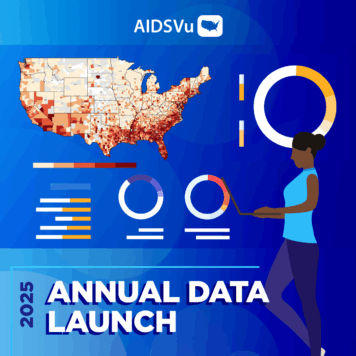Atlanta, GA – Today, AIDSVu released interactive maps and data visualizing the HIV epidemic at the state– and county– level for 2022. AIDSVu also updated data and maps on social determinants of health such as poverty levels, median household income, and percentage of people without health insurance. As experts in the HIV/AIDS space turn their attention towards Southern Joy at USCHA 2024, AIDSVu is specifically shedding light on the HIV-related inequities experienced in the South.
This year, AIDSVu is highlighting the new data through a health equity lens. While HIV can impact people regardless of race/ethnicity, underserved communities experience a greater burden of HIV than others, as shown by consistently higher new diagnosis rates for Black and Hispanic people compared to white people from 2008 to 2022. This is even more notable in some geographic areas; 10 out of the 12 states with the highest new diagnoses rates in 2022 were in the South.

“Over the past year, we’ve been taking steps to ensure that our data remains easily accessible and representative of the HIV epidemic in the United States. The annual updates to our state- and county- level maps are crucial to identifying trends and future steps towards ending the HIV epidemic,” said Patrick Sullivan, DVM, PhD, Professor of Epidemiology at Emory University’s Rollins School of Public Health, and Principal Scientist for AIDSVu. “This year, we want to call attention to the health inequities that contribute to greater burdens of HIV, particularly by race/ethnicity. These health inequities perpetuate disparities at every level of the HIV epidemic – from unmet need for PrEP to HIV stigma and social determinants of health. We also recognize the importance of acknowledging regional health inequities, such as the difference in HIV prevalence rates in the South between Black and White individuals. As we strive to improve health equity within the HIV epidemic, it is critical that we continue to contextualize the health disparities faced by underserved communities, regions, and individuals.”
In addition to insights on HIV prevalence, new diagnoses, and health equity, AIDSVu has also updated maps and data on the HIV Care Continuum, which outlines the process of HIV treatment and care from diagnosis to U=U and viral suppression maintenance.

AIDSVu’s maps and data demonstrate the need for further investments in health equity including mitigating effects of various social determinants of health such as lack of health insurance and poverty. There is still much work to be done to achieve health equity, improve the quality of life for people living with HIV, and end the HIV epidemic in communities across the U.S.
Data Highlights:
- In 2022, 37,966 people were newly diagnosed with HIV. Black individuals made up 38% of new HIV diagnoses and had a new diagnosis rate that was eight times higher than White individuals and twice the rate of Hispanic individuals.
- 10 out of the 12 states with the highest new diagnosis rates in 2022 were located in the South. The three jurisdictions with the highest new diagnosis rates were Washington, D.C., Georgia, and Florida.
- In 2022, 22% of Black adults living with HIV experienced homelessness or unstable housing, compared to 18% of Hispanic adults and 13% of White adults.
- In 2022, transgender individuals and females living with HIV reported higher levels of HIV stigmatization than males.
- Out of the 48 Ending the HIV Epidemic (EHE) counties, 9 of the 10 counties with the highest rates of new diagnosis in 2022 were in the South.
- In 2022, Washington, D.C. had the highest percentage of individuals (64%) who have ever been tested for HIV.
About AIDSVu’s Annual Data Update:
AIDSVu is presented by Emory University’s Rollins School of Public Health in partnership with Gilead Sciences, Inc. and the Center for AIDS Research at Emory University (CFAR). Now in its thirteenth year, AIDSVu continues to advance its mission to make HIV data widely available, easily accessible, and locally relevant to inform public health decision-making and action. The site aims to provide researchers, policymakers, and community members with a more comprehensive understanding of the HIV epidemic at the local-, state-, and national- level.
State- and county-level data displayed on AIDSVu were obtained from the Centers for Disease Control (CDC) and compiled by researchers at the Rollins School of Public Health. ZIP Code data were provided by state and city health departments and compiled by researchers at the Rollins School of Public Health. To learn more about AIDSVu’s HIV data and sources, see our FAQs and Data Methods.
The update of HIV Unstable Housing or Homelessness and HIV Stigma Data was made possible through a collaboration with the Centers for Disease Control and Prevention’s Medical Monitoring Project (MMP). Please see CDC’s AtlasPlus for additional details and to download the datasets.
AIDSVu’s Recent Updates:
Earlier this summer, AIDSVu published updated PrEP use data for 2023 and launched PrEPVu.org, a new PrEP equity platform dedicated to shedding light on PrEP disparities by race/ethnicity, sex/gender, age, access, and stigma. AIDSVu also developed a PrEP-equity focused newsletter, PrEPVu Monthly, that highlights important developments in PrEP research, news, and policy each month. The available PrEP data on AIDSVu and PrEPVu can help bring attention to PrEP trends across the U.S. and inform policies to increase PrEP access and awareness in underserved communities.

